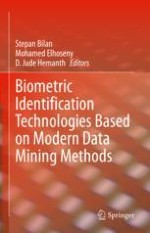
2021 | OriginalPaper | Buchkapitel
Possibilities of Applying the Triangulation Method in the Biometric Identification Process
verfasst von : Muzafer Saračevič, Mohamed Elhoseny, Aybeyan Selimi, Zoran Lončeravič
Erschienen in: Biometric Identification Technologies Based on Modern Data Mining Methods
Aktivieren Sie unsere intelligente Suche, um passende Fachinhalte oder Patente zu finden.
Wählen Sie Textabschnitte aus um mit Künstlicher Intelligenz passenden Patente zu finden. powered by
Markieren Sie Textabschnitte, um KI-gestützt weitere passende Inhalte zu finden. powered by